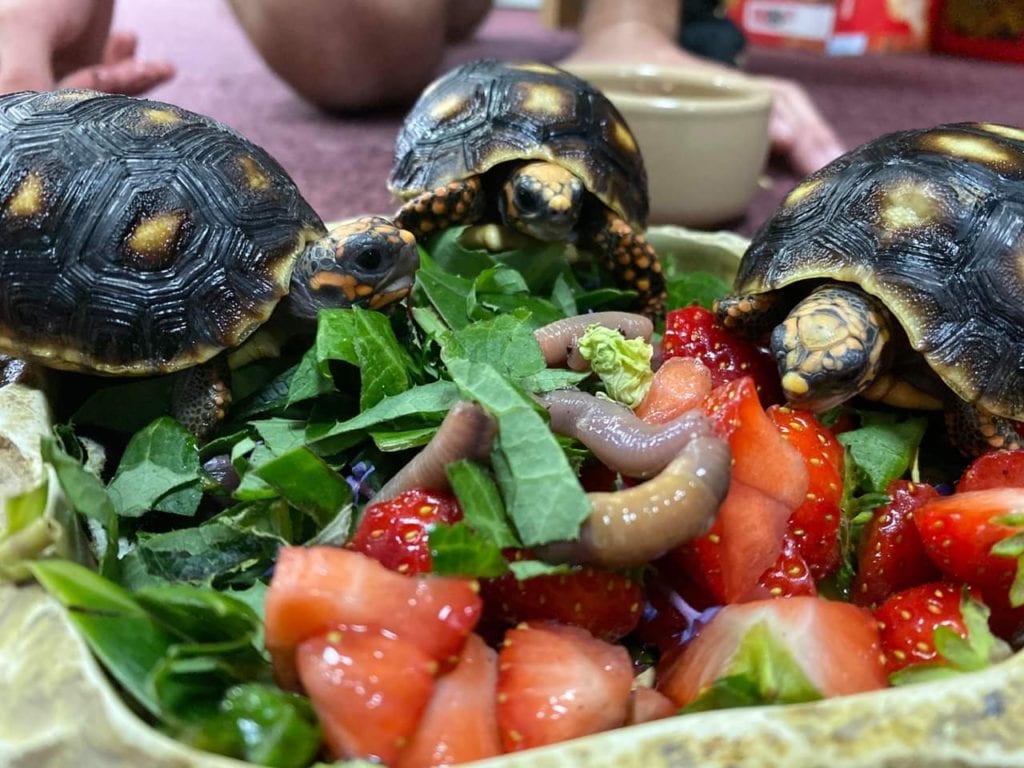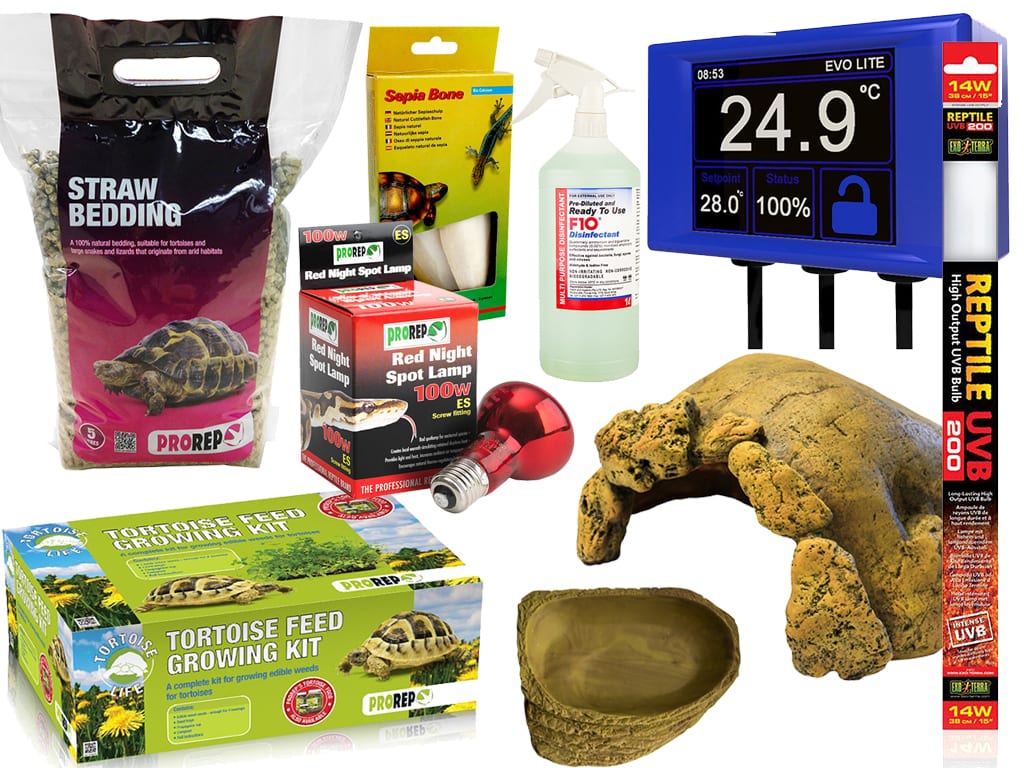
Red Foot Tortoise
Care Sheet
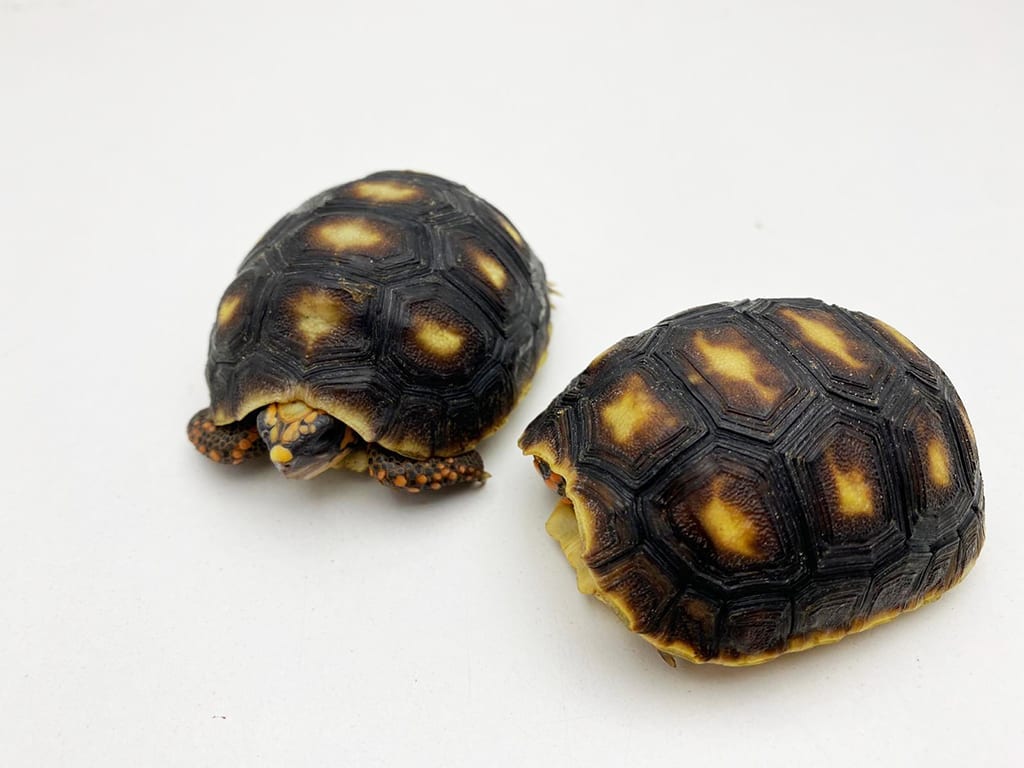
Red foot tortoises originate in Central and Southern America making them a humidity loving species
Red Foot Tortoises grow very large and males can weigh up to 9kg that’s 1 and a half stone!
Red foots– unlike some tortoises– are scavengers who occasionally eat pinkie mice (once or twice a month) they also eat mango, berries and other fruits as part of their diet, and they love mushrooms as part of a balanced diet mixed with their other foods
You may enjoy taking your tortoise out during the peak summer heat, we recommend minimising this time to 15-30 minutes so that your tortoise doesn’t get cold. Be ware of wild plants which may be poisonous to your pet
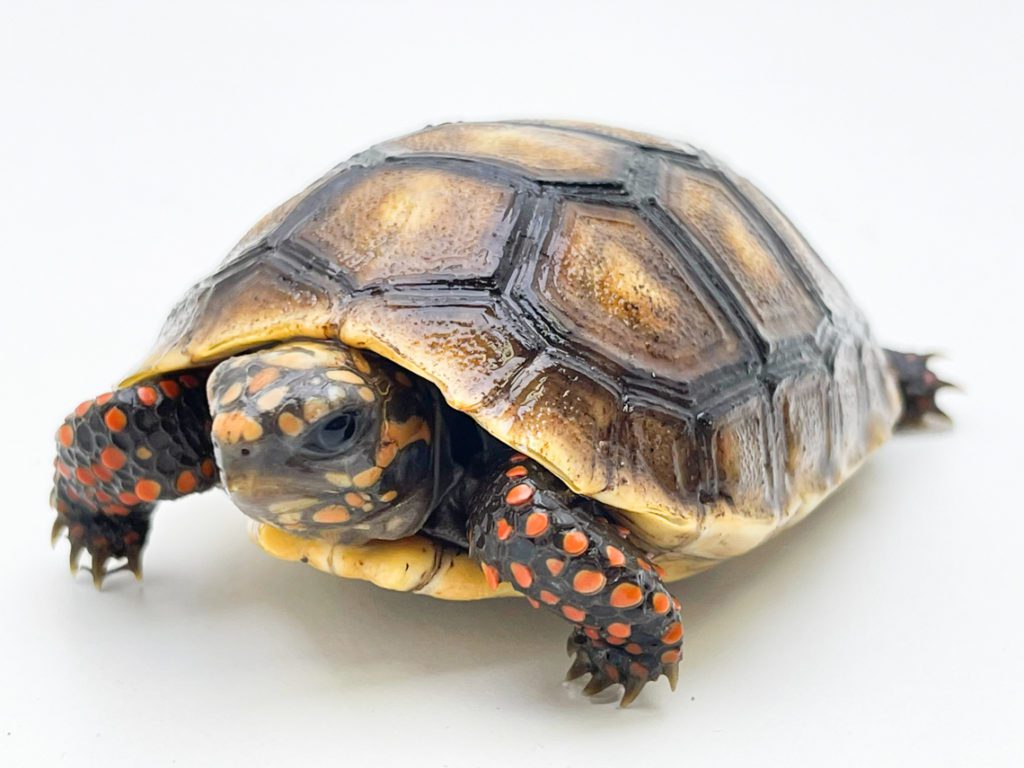

HANDLING YOUR RED FOOT
Tortoises are independent animals who although do well in captivity are not the kind of pet that enjoys a cuddle. Tortoises like to be on the ground or a surface so that they can walk around at will and do not enjoy held in one place.
Try to collect your tortoise from beneath, never pull its legs or put your hands close to its mouth. Tortoises have a hard beak so their bite can be painful, tortoises pull their legs in to protect themselves so be careful not to put fingers under their shell where they can be trapped. Tortoises should be kept level and not tipped or rolled over for long periods of time as this can upset the chemicals in their brains.
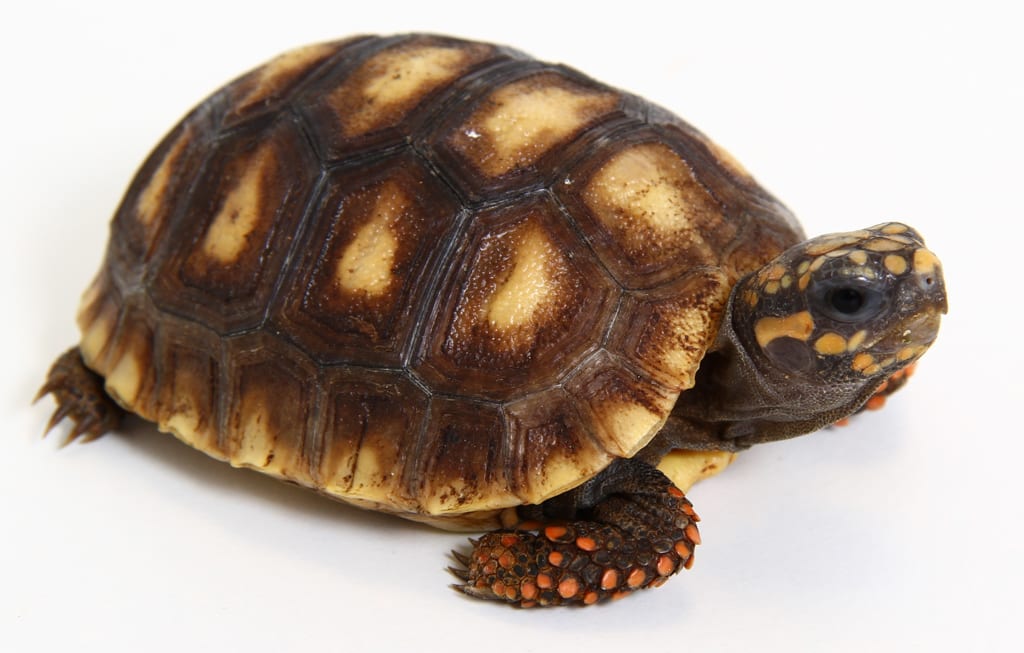

SEXING YOUR MARGINATED
Sexing tortoises is different depending on species. Tortoises can be very hard to sex when small, but once a tortoise is large enough to start to develop more distinctive characteristics there are a couple of noticeable differences.
Male Red Foot tortoises have a longer, thicker tail than a female and generally their tail will hang to one side, a female Ref Foot has a smaller thinner tail. Female Red Foot tortoises will have a flat carapace and males will be slightly curved.
Males are larger as adults.
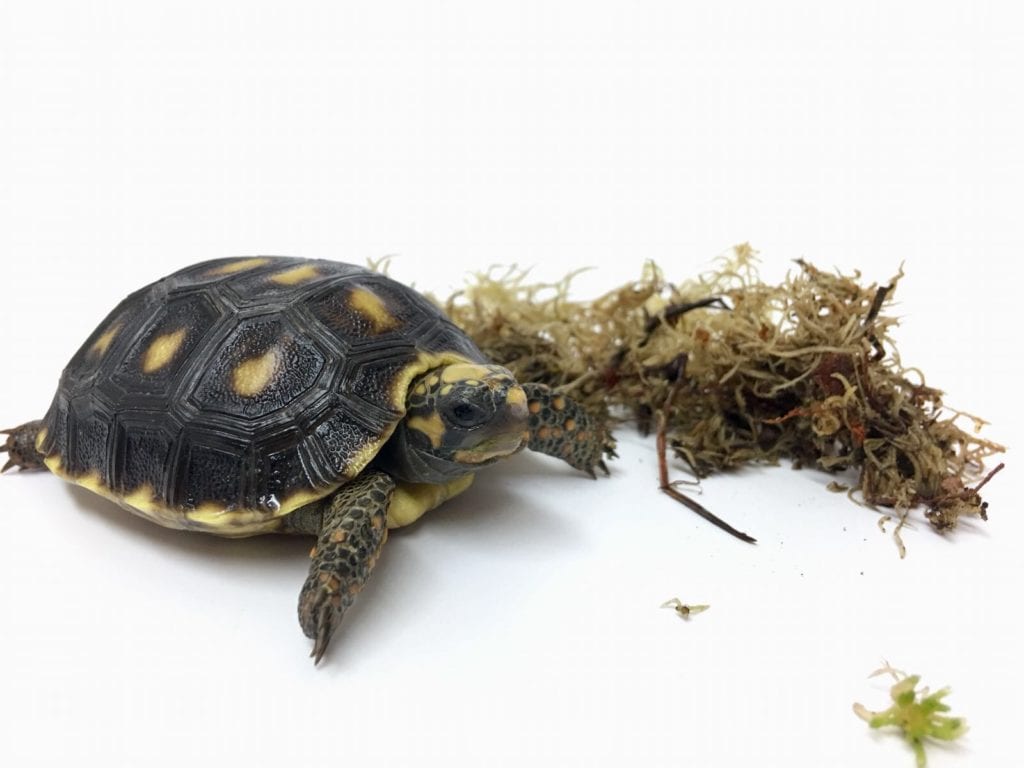

HEALTH CHECK
Eyes– Eyes should be clear and open wide. Look out for any swollen eye lids or swelling around the eye as this can signify an eye infection which are common in tortoises. Turtle eyes is a great product to treat the eyes with and requires a couple of drops daily to clear the infection. You can also use saline and a cotton pad to gently swab the eyes daily. Separate tortoises which show signs of infection to avoid spreading.
Shell– The shell should be smooth with no chips or signs of pyramiding. Scutes which raise and point at the top are referred to as pyramiding in tortoises and are a sign of MBD (metabolic bone disease) which means that the tortoise has not received enough UVB and calcium + D3. it is important to change your UVB bulb every 6-8 months and dust food with calcium +D3 powder twice a week. The UVB and D3 work in hand to keep your tortoises shell and bones strong.
Stool– your tortoises stool should be firm and moist. Watery stools are caused by feeding your tortoise too many high water content fruits or vegetables. Encourage leafy greens like Kale, Spring Greens and Cabbage instead of things like lettuce, cucumber and tomato.








ADVICE FOR LIFE!
When you buy your Pet & Housing from us!
Priority Boarding | Advice available face to face, via Telephone, Facebook Chat, Email, Instagram


